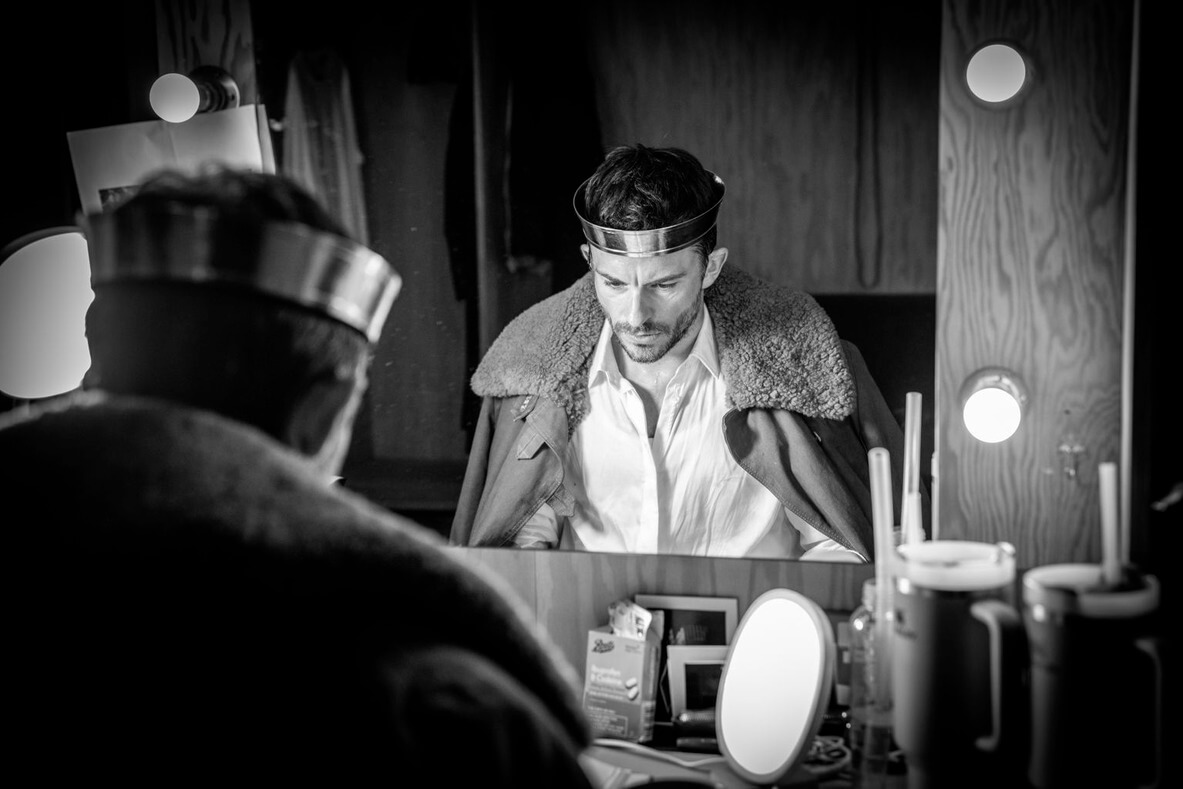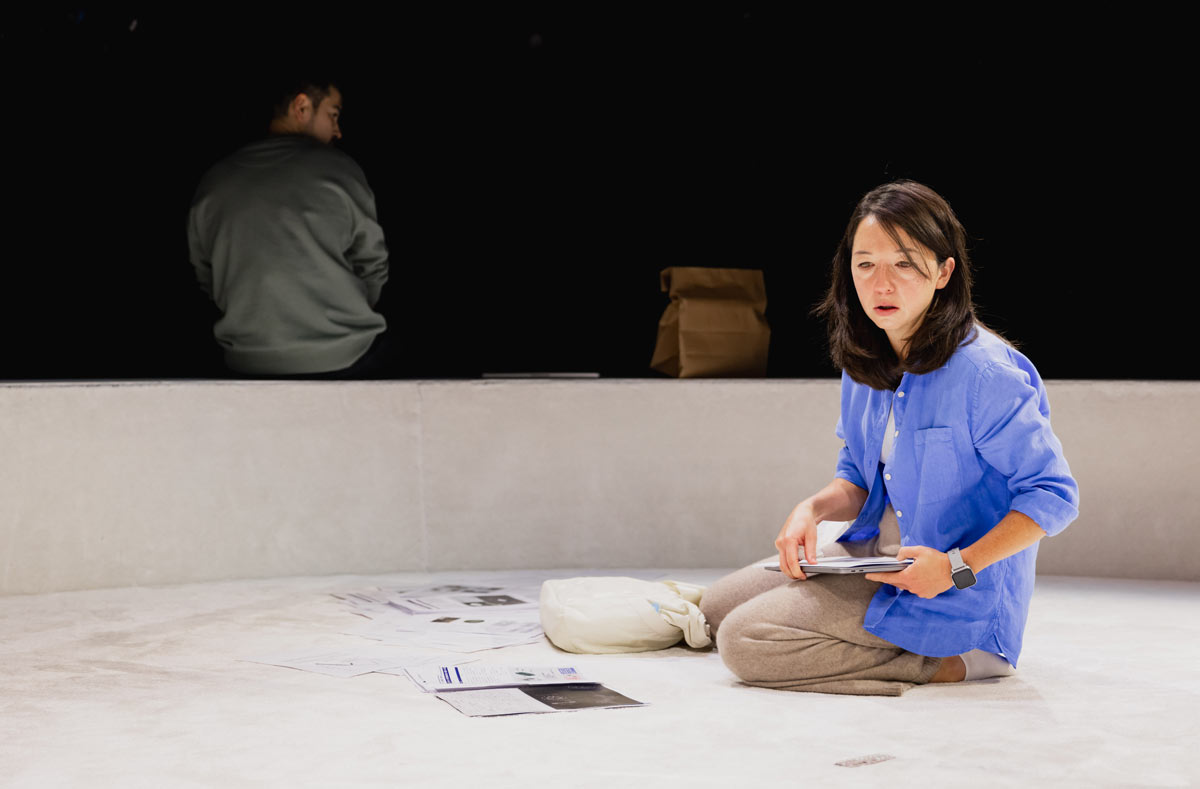As with most mixed bill presentations of this nature, there is sometime a tendency for the programmers to start slow and progress to the more developed and celebrated elements. Here, that is especially noticeable.
The first piece Passion, where classical repertoire is interspersed with a pair dressed in modern dress, is only partially successful and on opening night seemed both under rehearsed and under realised with the piece suffering from a number of very noticeable errors largely due to onstage spacing. Even with the familiar tones of Beethoven’s Concerto for Piano in D (Op61a) timing felt uncertain irrespective of the over accentuated performance smiles on show.
islands (the lower case “i” is unexplained) was an intricate dance for two females which explored the symbiosis and symmetry of interconnected figures who for the main part, are contained and move within the confines of their white performance space. This is rendered through overhead expanding and diminishing rectangles of light, which occasionally and effectively leap to become illuminated upstage backdrops). The intricacies of each featured movement and the means by which touches and gestures are executed, elevate this element of the programme to a sensitive and intimate level, in sharp contrast to the clunkiness of the first.
Finally, Crystal Pite’s extraordinarily powerful and affecting ANGELS’ ATLAS begins with a huge projected backdrop — a shimmering ethereal prism of light which splits into three, then reforms into a whole (like the Father, Son and Holy Ghost becoming one omniscient being). The upper torsos of the dancers are bared, demonstrating the lean and powerful nature of the physical demands of the discipline. They move as one body, breaking into two sections, three, then again returning into one whole unified mass of like-minded, like thinking, like moving entities. With intensely passionate music courtesy of Tchaikovsky’s Liturgy of St John Chrysostom (Op41) No6 Cherubic Hymn, the almost religious fervour is intense, unremitting and staggeringly beautiful as the dancers reach an epiphanic crescendo of group unity. Prepare to be emotionally swept up in the fervour — this reviewer found himself surprisingly susceptible.

 Kota Sato and Artists of the Ballet in Angels’ Atlas. Photo by Karolina Kuras. Courtesy of The National Ballet of Canada.
Kota Sato and Artists of the Ballet in Angels’ Atlas. Photo by Karolina Kuras. Courtesy of The National Ballet of Canada.

